#goree
Text

I met this gentleman on Goree Island, off the coast of Dakar, Senegal. He was just chilling, listening to music and doing something that looked like crosswords. We didn’t share a common language, but the smiles and head nods were enough. I asked if I could take a picture with his radio, and he kindly obliged.
#old time radio#senegal#goree#island#africa#african photographers#streetphotography#documentary photography#photography#photojournalism
2 notes
·
View notes
Text
"A man of wealth": Samuel Packard, the Rhode Island slaver [part 1]
In March 2018, I first wrote about Samuel Packard, my great-great-great-great-great grand uncle, and his role in the transatlantic slave trade as a slaver, otherwise known as a slave trader. [1] Thanks to a new database, Enslaved: Peoples of the Historical Slave Trade, I found that Samuel's role as a slaver was much more extensive than I had originally believed. His acts helped reinforce what Isabel Wilkerson describes as a racial caste system that uses rigid, arbitrary boundaries to keep groupings of people apart. [2] Such a system reinforces a social order supported by culture and passes through the generations, with the signal of one's rank in the hierarchical system as determined by race, with terms like "black" and "white" applied to people's appearance. However, Wilkerson argues that caste is rigid and fixed, while race is superficial and subject to change to meet the needs of the dominant caste within the United States. Ultimately, inherited physical characteristics are used to differentiate "inner abilities and group value" and maintain and manage the caste system within the United States. In the case of Samuel, he was part of this system, reinforcing it with his actions time and time again, like some of my other ancestors. [3] However, as I noted in the past, that he was not a slaveowner. This article aims to pull away the false narrative used to cover up the history of enslavement and how offensive the institution of slavery was itself, noting the part Samuel played in this history, recognizing who he is as a person, following the advice of Beth Wylie, a White female genealogist. This article also aims to not make White people comfortable with the past or sugarcoat anything, but challenge existing notions, as suggested by Black genealogist Adrienne Fikes in early June.
Of the 402 ships which sailed from Rhode Island to Africa from 1784 and 1807, 55 of them came from Providence, accounting for 14 percent of the state's slave trade. [4] One of those ships was a sloop named General Greene, registered in Providence. On November 16, 1793, it began sailing from Rhode Island. The ship was owned by Samuel Packard, Cyprian Sterry, Philip Allen, and Zachary Allen. [5] Helmed by a captain named "Ross," the General Greene arrived in Gorée, Senegambia sometime in 1793, with 101 souls loaded onto the ship by force. By the time the ship had reached the Dutch colony of Suriname, sometime in April 1794, only 84 enslaved Black people, who had been trafficked across the Atlantic Ocean, were remaining. This meant that 17%, or 17 people, died during the Middle Passage. In Suriname, enslaved Black people were needed, as were Indigenous people, to make the colony viable, even though enslaved Black people were treated terribly, and many escaped their plantations. [6] The Zachary Allen noted here was undoubtedly the father of the textile manufacturer born in 1795, who was born in 1739. He has been described as a "successful merchant" who amassed a great quantity of capital. It is not known who the "Philip Allen" was and whether the said person was related to the manufacturer born in 1785.
On July 12, 1794, the General Greene returned to its home port somewhere in Rhode Island. The owners had been paid, the ship was not captured, and the enslaved Black people disembarked. In this trip and for all slave ships, the captain was completely in charge, with the duty to "navigate an efficient course, maintain authority over the crew, fill the vessel to capacity with enslaved peoples, and negotiate a high sale price for the enslaved cargo at port markets." [7] Sadly, we do not know the names of the 101 people who were aboard the General Greene in bondage at the beginning of the journey, nor those at the end, we only know the number of those aboard the vessel.
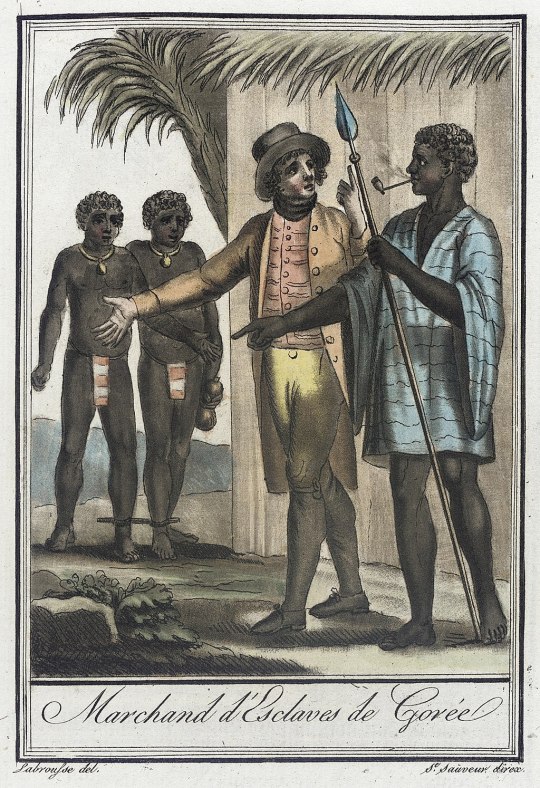
A slave trader of Gorée, engraving of c. 1797, by Jacques Grasset de Saint-Sauveur, via Wikimedia, but in public domain
Gorée is infamous for being the House of Slaves, which was built between 1780 and 1784 by an Afro-French family, the Métis. It has been described as having "one of the slave warehouses through which Africans passed on their way to the Americas," symbolic no matter how many Africans passed through, especially when it comes to its "door of no return." In the case of Senegambia (present-day Senegal, The Gambia, and Guinea-Bissau, portions of Mauritania, Mali, and Guinea), in 1794, it was partitioned between the French and British. This journey may also be the one the Philadelphia Inquirer referred to in September 1794 when it talked about a Captain Samuel Packard traveling from Barbados, which was then part of the British West Indies. [8] As for Cyprian, he was one of the biggest slave traders in Providence, he "financed at least 18 voyages that transported more than 1,500 enslaved persons to the southern United States and the Caribbean during the 1790s."
Later that year, on November 28, 1794, the GeneralGreene departed once more from Rhode Island, this time with John Stanton as the captain. [9] It would go on a 196 day voyage. The ship reached Iles de Los sometime in 1795, with 99 souls forced aboard. When it reached Savannah, Georgia in May of that year, only 88 remained, meaning 11% had died when trafficked across the Atlantic. The General Greene returned back to Rhode Island sometime after June of the same year. Iles de Los is a set of Islands off Conakry, Guinea. At the time, there was a trading post employing workers who repaired ships, and pilots for rivers, on the island. It would be controlled by the British beginning in 1818 and ending in 1904, later to be part of French Guinea from 1904 to 1958. Those on the islands were the Baga people and spoke the Baga language, specifically a Kaloum or Kalum dialect. That same year as the General Greene left the state, the African Union Society of African descendants in Rhode Island was organized in Providence to serve the needs of Black people in the state itself. [10] In Georgia, slavers from Rhode Island, especially in the early 1790s, dominated the slave trade to the state. Samuel and Cyprian were integral to this trade, with the latter described as the "wealthiest ship owner and most active slave trader" in the state. Again, the names of those on the ship were not listed, so we only know the number of those on the ship.
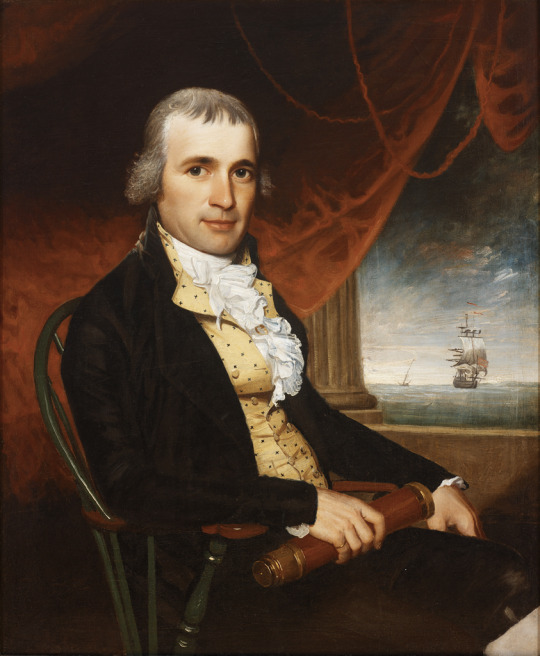
Sometime in 1795, James Earl, a Massachusetts-born artist, released his unsigned 35 x 29 oil painting, on canvas, of Samuel, then 45 years old. RISD described this painting as signaling his "social and professional role in the new republic," as he sits in a Windsor Chair, noting his waistcoat indicates he is "a man of wealth," with the background referring to his "interests in maritime trade." The museum also calls him a "merchant and talented mariner," who owned 39 vessels that sailed from Providence itself. Of course, his role in the slave trade is never mentioned. This is not a surprise, as the 1942 profile of Samuel in the Rhode Island History notes the same. [11] Furthermore, the absence of the slave trade from Earl's painting is not unique. As Edna Gabler points out, Black people in paintings by Charles Wilson Peale, John Trumbull, and others, "occupy subordinate positions, are rarely identified by name, and are most often used as props, background accessories, or foils," or, in this case, not mentioned at all.
The following year, on October 24, 1795, the Ann, a ship registered in Providence, and owned by Samuel and Cyprian, departed from Rhode Island. [12] Unlike the other journeys, Samuel was the captain. The ship would land somewhere on the African continent, with 133 people forced aboard. 70% of these African captives were men, about 26% were boys, and around 4% were women. Almost 26% of those aboard were children. 13 of these souls, 10% to be exact, would die during the Middle Passage. When the ship arrived at Spanish-controlled city of Havana, in Cuba, sometime in August 1796, only 120 remained, and all those in bondage disembarked there, with Samuel and the ship returning to Rhode Island. At the time, Havana was one of "the largest slave markets in the world," with over 600,000 Africans taken from West Africa and shipped to Cuba over three centuries. The Ann would later be sold in Havana, seemingly in September 1796. [13] Like with the other ships noted in this article, those in bondage aboard the Ann are not named, a clear form of dehumanization.

An enslaved Afro-Cuban in the 19th century, via Wikimedia Commons
At the time, landowners were beginning to win concessions that would change how land would be owned in Cuba, a process that would continue until 1820. [14] Values of land were rising and Cuban planters were consolidating their power on the island, importing machines from other European colonies, like those in the British West Indies, to strengthen the sugar industry. When Samuel landed in Cuba, he would have seen the beginning of changes in Cuban society, with population numbers beginning to rise, as did profits and agricultural production, with new position for the class of Cuban Creoles. The number of enslaved Black people on the island increased as demand for more workers continued to grow, especially after the import of White workers wasn't successful. An average of 1,143 enslaved Black folks in chains were brought into Cuba each year, between 1763 and 1789. The plantations in the British West Indies, including Barbados, the Leeward Islands, Jamaica, Ceded Islands, Trinidad, and British Guiana, were very profitable, with the average rate of profit being 6.1% between 1792 and 1798, based on the plantations studied. [15] Even so, the end of a sugar boom in the 1790s led politicians and planters to demand that the slave trade be ended once and for all.
On January 9, 1796, the James, a schooner registered in Providence, owned by Samuel and Cyprien, with Albert Fuller as the captain, departed from Rhode Island. [16] It went on a 216-day voyage. Once in Africa, 119 souls were forced aboard the ship in bondage. By the time it arrived in Savannah, Georgia, in mid-August 1796, only 98 enslaved Black people were remaining. As a result, 17.5%, or 21 people, had died along the way. The ship returned to Rhode Island by late October 1796. The ship later had Nathan Sterry as its captain when registered in January 1797, with Samuel as its owner. Sterry would also be the captain of a ship, the Mary, upon which three enslaved Black people attempted a mutiny to escape their conditions by taking control of the ship, even though this was, unfortunately, not successful. In this last illegal slave trading expedition which Samuel was involved in, those in chains, aboard the James, were again only listed as a number, but no names were provided.
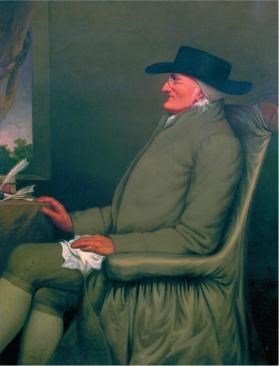
Painting of Moses Brown via NPS
On March 11, 1797, the Providence Abolition Society petitioned then-Attorney General Charles Lee, charging that the Ann, a ship of Cyprian and Samuel, had sailed under Samuel's command to travel to the African coast for enslaved people, even though this violated Rhode Island law. [17] A law had been passed in 1774 which made it illegal for citizens of the state to bring enslaved people into the state unless they had a bond to "bring them out again within one year" and those people brought to the state in defiance of the law would be "set free." However, the law caused slavers to sell captives in other ports while bringing their capital back to Rhode Island with them. The later was followed in later years, in 1787, by a measure which "banned participation by Rhode Islanders in the African slave trade." [18]
Some argued that the state's involvement in the slave trade was "part of a scramble by merchants to find something to trade and to market"with those involved earning a sizable profit. Following the enactment of the law in Rhode Island, similar laws passed in Connecticut and Massachusetts after being pressured by Quaker merchant merchant Moses Brown and Samuel Hopkins, a minister. The critical factor, according to I. Eliot Wentworth of University of Massachusetts Amherst's Special Collections & University Archives, of these laws was enforcing them, and when that did not happen, it lead to the creation of the Providence Society for Abolishing the Slave Trade. [19] It was mostly comprised of Quakers and had a membership of about 180 members. The society would face resistance from those invested in the trade, but still "played a valued role in supporting individuals of African descent in defending their rights in court." It won a judgement against Caleb Gardner, a merchant, in 1791, for "carrying out a slaving voyage in his brigantine Hope."
Cyprian, who owned half of the ships involved in the illegal slave trade, left it behind in order to avoid a crippling fine, signing a pledge to leave the slave trade forever, as did Samuel, from what I have read. [20] These efforts, like those of the Providence Abolition Society, were important since legislation against slave-trading in Rhode Island was hard to enforce, as noted earlier. For instance, a merchant and influential slaveowner named John Brown, a person who was instrumental in founding Brown University, tried in 1796 for violating the Slave Trade Act of 1794, prohibiting ships in American ports from bringing in enslaved people from any foreign country. At first he was convicted and his ship, the Hope, was confiscated for violation of federal law. However, as the case went through the legal system, he was ultimately acquitted, in a jury trial, "emerging with an acquittal and a judgment for costs against the Providence Abolition Society." [21] He even cited the arrangement the society made with Cyprian as part of a plea to stop prosecution against him.
As it turned out, the judge who presided over the case (Benjamin Bourn) and the federal prosecutor (Ray Greene) were allies of Brown, and the trial itself had a "devastating effect on the Providence Abolition Society, which went into a rapid decline." This was because, while by 1793, the Providence Society's activity had shifted to pushing for federal legislation, it remained dormant from February 1793 to November 1821. The Society was revived by David Howell and its name changed to the Providence Society for Promoting the Abolition of Slavery, continuing to meet until 1827. John later beat another prosecution in 1798, and in 1799, Samuel Bosworth, Surveyor of the Port of Bristol, was kidnapped by eight men dressed by Indigenous people, intimidating officials and putting a "halt to local enforcement of the Slave Trade Act" within Rhode Island.
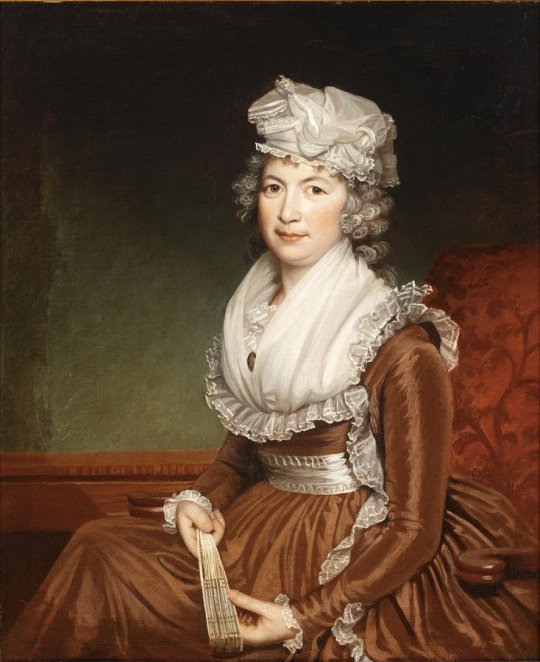
Via RISD, also painted by James Earl, and in the public domain
Samuel went onto become a wealthy shipowner and merchant who lived in a three-story-high lavish mansion in Providence with his wife Abigail Congdon. [22] He had married Abigail on December 13, 1789 at Saint Paul's Church in Rhode Island, with a Reverend William Smith as the minister. In 1798, Abigail inherited a portion of the Congdon homestead farm on Boston Neck. Samuel and Abigail had a number a children in later years, clearly living in Providence in 1800, just as he had in 1790. Their children included Abigail in 1802, Samuel in 1804, and Susan in 1806. By 1804, Samuel would work for the Providence Insurance Company, which ensured products like sugar, lived at Westminster Street in Providence (a property he bought in 1797). [23]
The Providence Insurance Company was founded on the initiative "of the Browns," including John, the arrogant slaver, in 1799. Other prominent shopping merchants, like Thomas Poynton Ives, John Innes Clarke, and Moses Lippitt, were on its board of directors. Samuel would be a member of the Providence Marine Society (PMS) and part of the Providence Marine Corps of Artillery after March 1803. [26] The latter group, founded in 1801 by PMS members, was a "private mutual aid society for sea captains," and while it later became part of the Rhode Island militia, the group itself "never served in active combat." The PMS, on the other hand, was a "mutual aid society for sea captains" founded in 1798.
Samuel also, reportedly, remembered George Washington fondly. This was not a surprise. In 1788, Olney Winsor, son of Samuel Windsor, a pastor of the Baptist Church of Providence, traveled to Alexandria on a sloop of which Samuel was the captain: the Susan. Both landed in Alexandria, went to a plantation at Col. Mason's Neck, seeing the control of slavemasters over those they enslaved firsthand, and met with George Washington himself.
By 1798, Cyprian was still living in Providence, owning a house, with a tenant: Brown & Ives, said to be a leader "in American commerce and industry for many years," and part of the Brown family which financed Brown University. [24] The company had been formed in a partnership between Nicholas Brown and Thomas Poynton Ives in 1791. The same year, Samuel is reported as having to have a summer house, house and barn, and perhaps another barn elsewhere in the city.
This wealth would not be possible without his involvement in the illegal slave trade which trafficked human beings from Africa back to the Americas in bondage. Let us be clear. Samuel, like Cyprian, might be called a human trafficker in today's language, if what he did happened today, although the comparison of present-day human trafficking and the transatlantic slave trade is not exact due to the differences between these oppressive systems of exploitation. [25] When they were alive, however, Samuel and Cyprian would likely be called slavers or slave traders. We don't know if Abigail had any role or say in Samuel's involvement in the trade, as we have no written records from her that I am aware of at this time. Even so, she still benefited from it, as she lived a life of luxury with Samuel until his death in 1820.
Samuel would also reportedly own land in Cranston, Rhode Island and in Illinois, along with a home in North Kingston, while building a house on the land his wife inherited on the death of her father, John Congdon. [27] Items from his houses are currently in RISD. John's grandfather, Benjamin, was reputed to be a huge slaveowner, while John, who had ten children with his wife, Abigail Rose. He received a tract of land of unknown acreage in Boston Neck, on his father's death, and then in October 1, 1803, Thomas R. Congdon sold one hundred and fifty acres of the farm to Samuel Packard, later known as the "Packard Farm," later reaching 500 acres. John's father, according to a 1765 listing, had seven enslaved people, one man (Coff), two young boys (Roshad and Tom), one woman (Tent), and three others (Cato, Fortune, and Jimie), working for him, which he manumitted at the time. [28]
In 1811, Samuel was aboard a ship when it French privateers raided the vessel, and how he tried to take back the ship, but was captured. [29] He would be at sea for eight days, then in a French prison for another eight days. They remained in France for another three months until they were allowed to go home. 17 years earlier, on February 4, 1794, France had abolished slavery, declaring that "all men irrespective of color living in the colonies are French citizens" but it was not reinforced, and Napoleon re-instituted it on July 16, 1802. He still remained in Providence, as he had in years prior, specifically in the city's West District. [30]
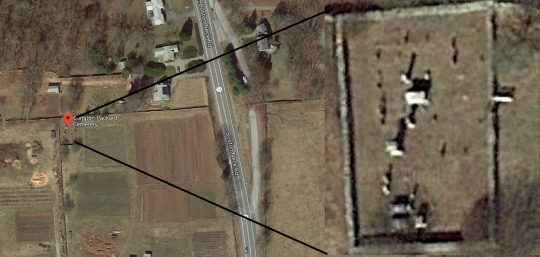
Screenshot of the cemetery where Samuel and Abigail are buried with a close-up of the cemetery taken from Google Earth
He died in July 1820, [31] while Abigail died in May 1854. Before her death, she established the Providence Female Charitable Society, which aided "indigent women and children." Both Samuel and Abigail are buried at Historic New England’s Casey Farm. While no wills or probates are available from them, both were of a higher class than others in Rhode Island and more broadly in New England. For Samuel, land ownership remained an important marker of civic identity and a measure of independence, as it was for other Americans, as historian Nancy Isenberg points out. This was based on the idea that people were not free unless they had "the economic wherewithal" to control their destiny, which comes from land ownership, deriving from an old English idea that the "quality of the soil determines the quality of the people."
Coming back to Samuel, his wealth derived, in part, as noted earlier, from trafficking enslaved Black people who were taken from their homelands by force. What he did was illegal, since the passage of a Rhode Island law in 1787 prohibiting it, and the Slave Trade Act of 1794, the latter with possible seizure of ships and a $2,000 fine, a law amended many times over the years until the Act Prohibiting Importation of Slaves passed in 1807. Even so, he still engaged in the trade despite the illegality, meaning, if he had been charged for his crimes, and convicted, he would have paid a total of $2,400, in, let's say, 1797. [32] This would likely have been a drop in the bucket for him. If assessed today, he would be paying $47,900.00, in terms of real price/real wealth, one of the most accurate measures, tied to CPI, according to Measuring Worth. In any case, what Samuel did went against "justice, integrity, and uprightness among people," in the words of the Quakers, who petitioned the Rhode Island legislature to abolish the slave trade in June 1787, participating in what they called an "unrighteous and inhuman trade to Africa for Slaves," complete with "cruel bondage."
Hopefully this article is a step in reworking and reframing narratives, as Adrienne Fikes pointed in June of this year. It is part of, what she talks about, in understanding who you are, who are in relation to others, who you come from, who your ancestors are, while looking at harm of past and its impact today. She also points out the value of sharing what you find with descendants of future generations, as does Donya Williams and Brian Sheffey of Genealogy Adventures (those who interviewed Fikes), noting the importance of think of microaggressions and pain involved in Black genealogy. Fikes also argues, rightly, that understanding structural racism, and noting the evolution of slavery, not seeing it in past tense. Furthermore, she says recognizing the humanity of people is important as is the current reality of dignity and humanity stolen from Black people, as is generational wealth. With this all being said, I look forward to hearing from you all as I continue to research my enslaved ancestors, as part of actively doing something to dismantle a system which privileges White people, uncovering more stories of my ancestors, even if it is difficult and disturbing at times to confront. [33]
Note: This was originally posted on Aug. 25, 2021 on the main Packed with Packards WordPress blog (it can also be found on the Wayback Machine here). My research is still ongoing, so some conclusions in this piece may change in the future.
© 2021-2022 Burkely Hermann. All rights reserved.
#slavery#packards#genealogy#family history#genealogy research#lineage#ancestry#slave trade#black history matters#black lives matter#rhode island#gambia#suriname#slave ships#18th century#19th century#public domain#senegambia#savannah#goree#havana#cuba#middle passage#cyprian sterry#black women#plantations#moses brown#abolitionists#james earl#george washington
2 notes
·
View notes
Text
*I worship you Tumblr don’t remove it

Red means I love you.
#blood soaked farcille is my fav kinda farcille#marcille be like#lemme defy the LAWS OF TIME AND MORTALITY to save my gf#like#ughhhh#dungeon meshi#marcille donato#falin touden#farcille#SquareCloud#cw: gore#cw blood
49K notes
·
View notes
Text
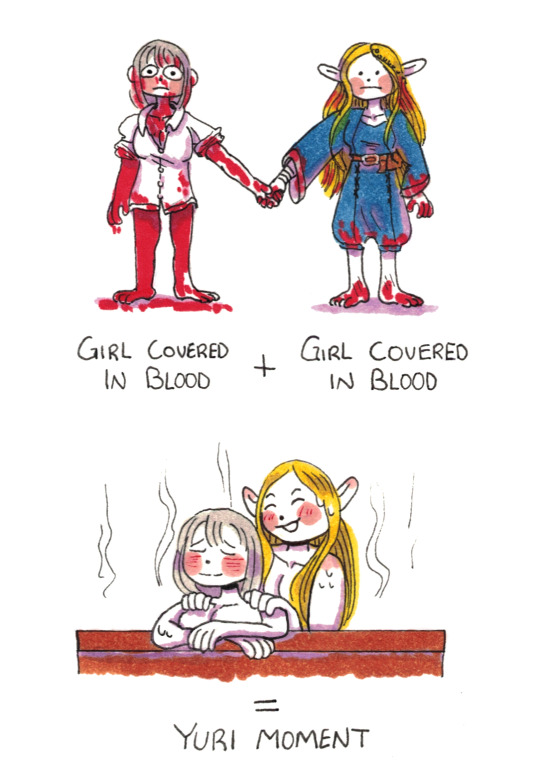
The math just adds up!
#dungeon meshi#falin touden#marcille donato#farcille#I always loved how chapter 27 ends with them both so bloody and 28 starts with them in the bath.#not just because of how iconic the bathtub moment is but because you know they had to scrap off so much gore first.#I think everyone in the party took a very long and methodical bath but Falin was basically *all* blood*.#Being covered in blood is one of those 'just girly things' that women deserve to stop being shamed about.#I just don't think Chilchuck is progressive enough. He probably made them take a bath first B*/#Okay jestering aside I want to just highlight -#The magnitude of Marcille's joy at seeing her dearest friend again! Of holding her and sharing her presence in the same room!#Something about this reunion feels like a beautiful dream you are afraid of waking up from...
38K notes
·
View notes
Text
as far as i'm concerned all gore is necessary
#obvi just using gore to compensate for shitty writing doesn't make something good#BUT. complaining about gore in horror movies is sooo weird like that's half the reason i'm here#also good and fun gore does actually compensate for shitty writing. maybe not to you but to me#it has to be good tho#m
23K notes
·
View notes
Text
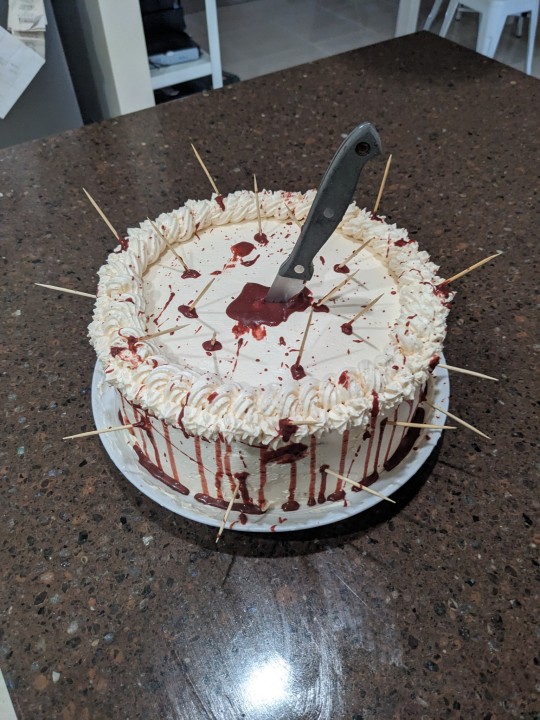
Made a cake for Tumblr's favourite holiday ☺️
Happy Ides to those who celebrate 🗡️🗡️
19K notes
·
View notes
Text

dragon meat, you, and me
#marcille donato#falin touden#farcille#dungeon meshi#delicious in dungeon#tw blood#tw body horror#tw gore#as a normal farcille fan this revival has been on my mind since i first read it and getting to watch it is like yippee!!#like messy revivals are everything - the consequences that will haunt u for the rest of the time they are alive#the initial hopeful moments where it all seemed well but quickly descend to That not being the case - losing not only the bit of evidence#evidence that your dream may work out but also someone you deeply care about in the process… marcille my Beloved#ofc wholly thruout the journey - at the forefront of it - getting falin back was the most crucial point but so wuickly :(( it was lost#on the other end its crazy to think about the compoments of falin now - human - dragon (dungeon) - marcille’s magic and desperation#the food the crew cooked (digested) - she is made of many parts!!#also i did not realize how medical it feels to draw smth like this. i dont usually explore the inner parts or use a lot of blood#in my work so rendering everything and looking up refs it felt quite magical (?)#ruporas art
13K notes
·
View notes
Text

I'll rip in hands and teeth and take a bite
#my art#jujutsu kaisen#jjk#yuji itadori#ryomen sukuna#yuuji#sukuna#sukuita#fanart#jjk fanart#gore tw/#body horror tw/#blood tw/#YUUJIIII BABY BOYYYY BABYYYYYY#hes hungry :/#sukuna seems 2 be having fun gdjhfgsdf . boys when theyre bored.#so happy i wrangled this pose in2 something im happy with i almost abandoned the idea entirely#sometimes front facing is the answer.....who knew :'>#also#can anyone tell me. how far up yuujis fun arms go i had no idea so i just stopped them at the elbow#if im wrong that will b not swaggy :(#listening 2 sena's cover of butchers vanity on repeat btw VIBES#cannibalism motifs my beloved uwu#in other news this is the least amount of shading ive done in a very long time#and its been even longer since i pulled out th white lineart#but overall i like this piece so much yuuji is so cute and it doesnt make sense 2 me at all#edit changed the colour to make it more obvious whats sukunas legs vs whats yuujis back
9K notes
·
View notes
Text

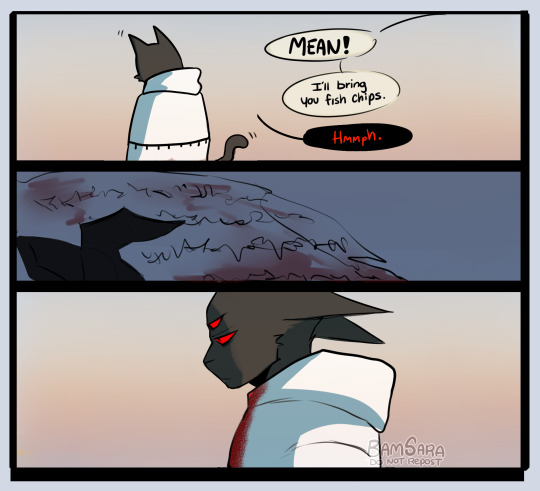
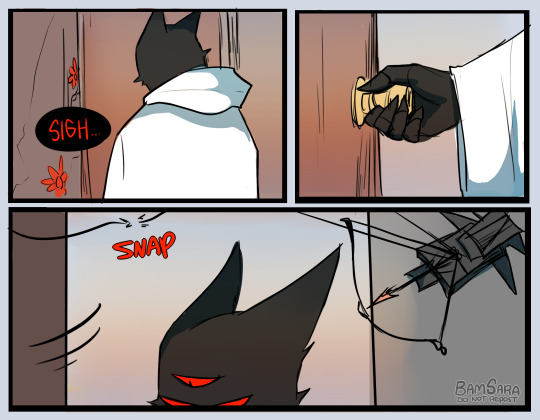






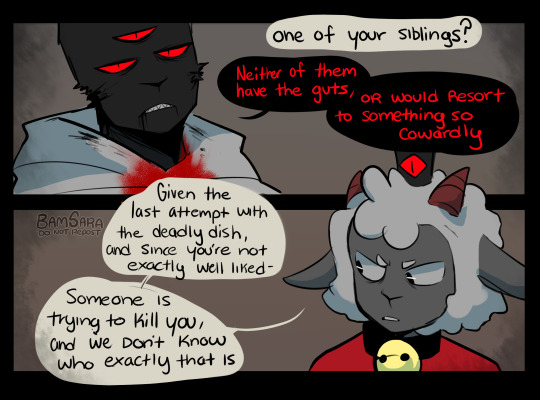


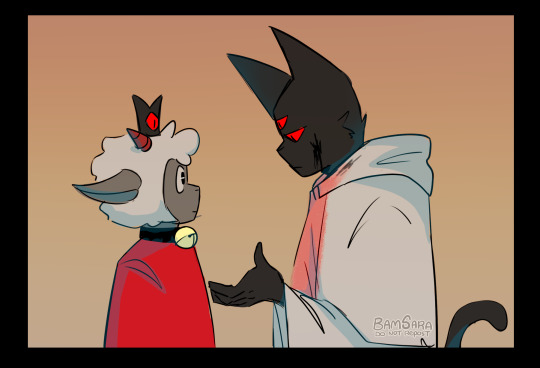

Finally finished this, one of the many comic wips I started the last few months (you can kinda see where I got lazy and changed up some stylization in a few panels lmao)
Anyway, a scene I have planned out for The Rehabilitation of Death.
Some extra doodles below:
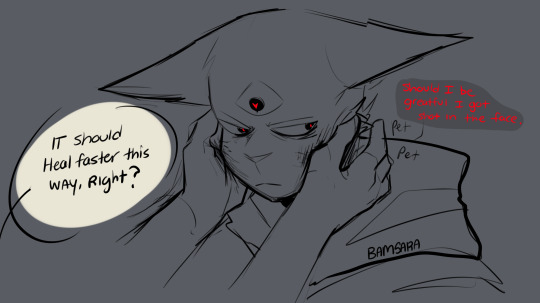

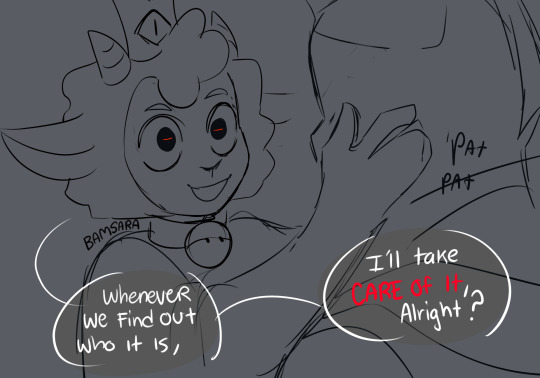



#narilamb#trod au#the rehabilitation of death#tw blood#tw gore?#face injury#cult of the lamb#cotl narinder#cotl lamb#the one who waits#cotl toww#doodles
9K notes
·
View notes
Text
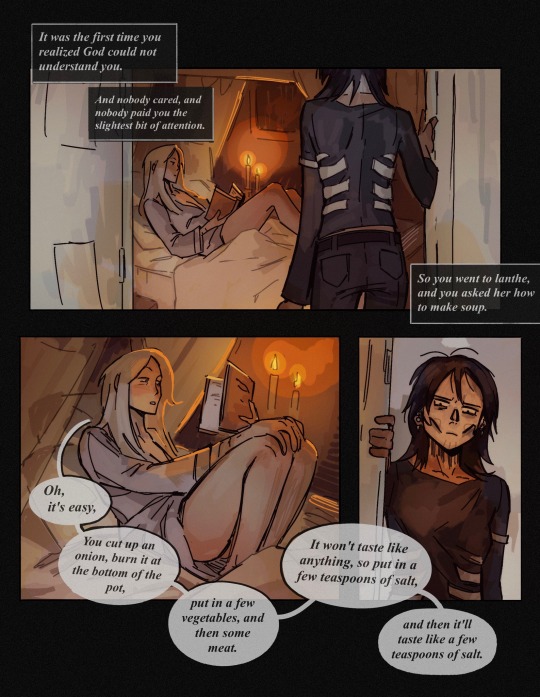
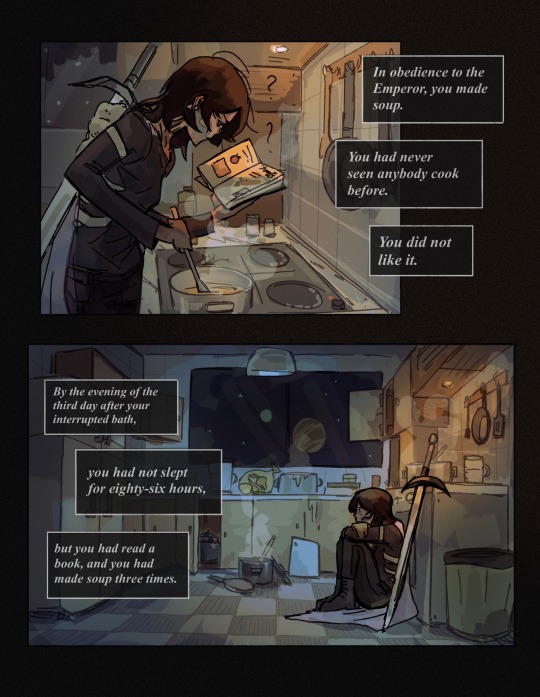



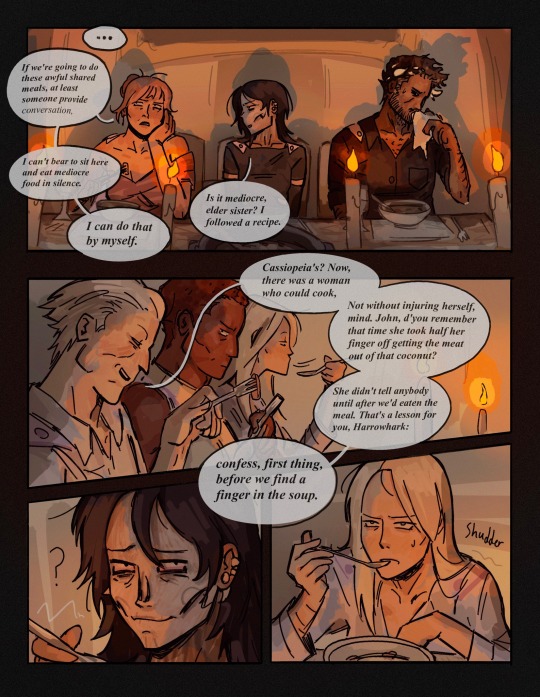
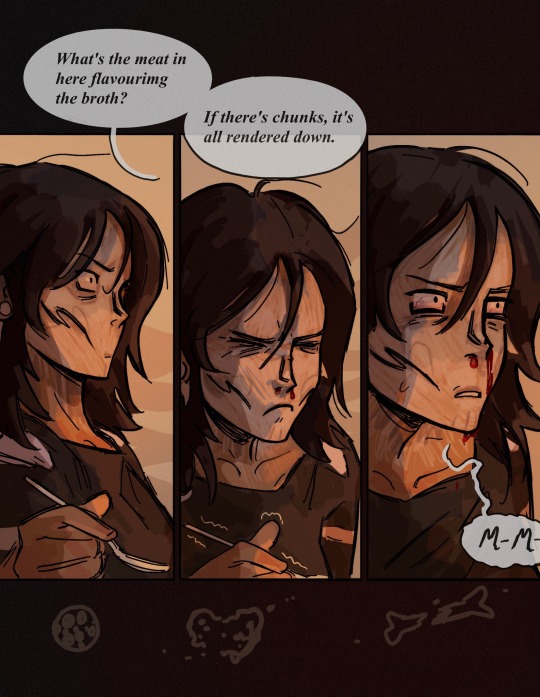

harrow soup comic! harrow soup comic!
took some creative liberties with the structure of it all otherwise it would've been 20 pages long... love u tazmuir and all your words but i removed some for my sake... enjoy...
#art#artists on tumblr#the locked tomb#digital art#tlt#gideon the ninth#harrow the ninth#htn#gtn#harrowhark nonagesimus#cw gore#john gaius#g1deon#ianthe tridentarius#augustine#I FORGOT TO SAY#dedicated to my good friend#my good friend sam humphries
15K notes
·
View notes
Text
they hate me for my slut waist and recurring self harming behavior
10K notes
·
View notes
Photo
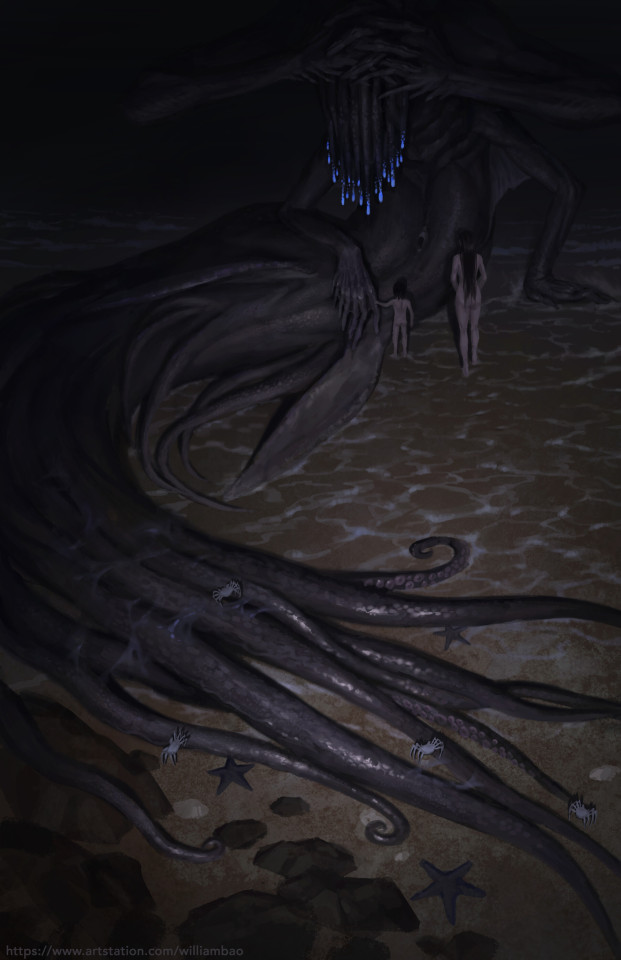






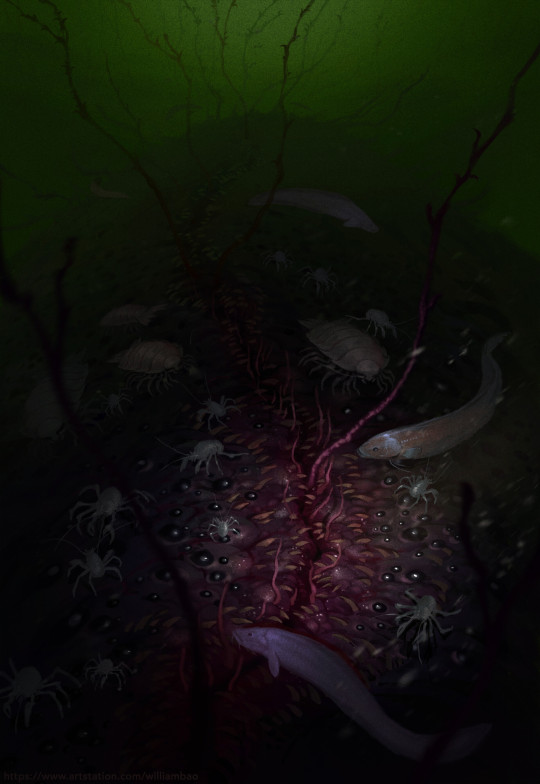
Sea monster illustrations by William 巴特尔 Bao
#art#illustration#digital art#dark art#horror#fantasy#macabre#sci fi#creature design#gore#eyes#teeth#deep sea#tentacles#sea monster#sea creature#lovecraft#giant#whale#squid#octopus#fav
9K notes
·
View notes
Text
I'd like to introduce to everyone this horrid thing I created about a year ago but haven't shown many people yet (probably for the best).

This is Baby. AKA The Monster. AKA Sight Tremendous and Abhorred, AKA Vile Insect, AKA A Thing Such As Even Dante Could Not Have Conceived, etc, etc. It's made from bits of scrap fabric I scrounged from various sources and is roughly the size of a human toddler. Its design is based on Mary Shelly's original descriptions of Frankenstein's creature.
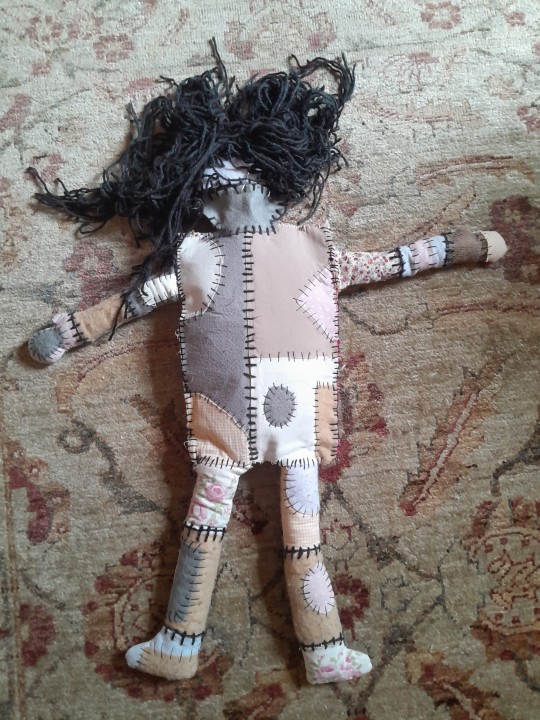
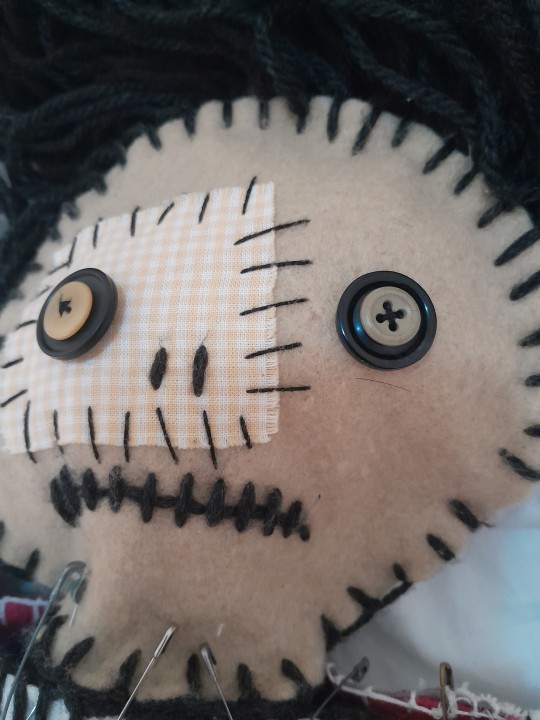
But that's not all! Behold!

You can dissect this little abomination to reveal a full set of crocheted, knitted, and scrap fabric organs, all hand-stitched by yours truly!

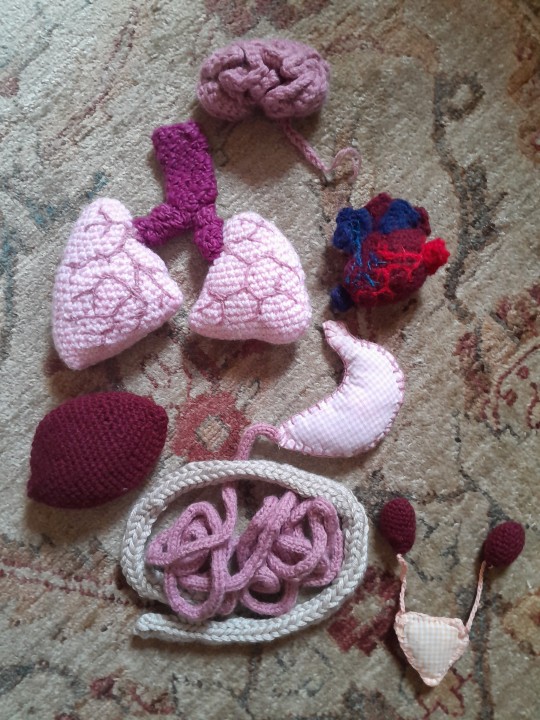
It has a heart, stomach, lungs, liver, small and large intestine, kidneys, bladder, and, of course, a brain! So it can ponder the horrors of its own existence!

I used this pattern by Less Than Three for the heart. I ended up felting it because I screwed up most of the stitches (I was relatively new to crochet at the time). The result was a bit of a blobby mess, but oh well.
So yeah. This thing lives in my house now (my family hates it). I have yet to reap the full consequences of my hubris.
#frankenstein#crafts#sewing#crochet#knitting#craftblr#yarn#creepy cute#horror dolls#hand stitching#little guy#creature#anatomy#monster#gore#kind of
13K notes
·
View notes
Text



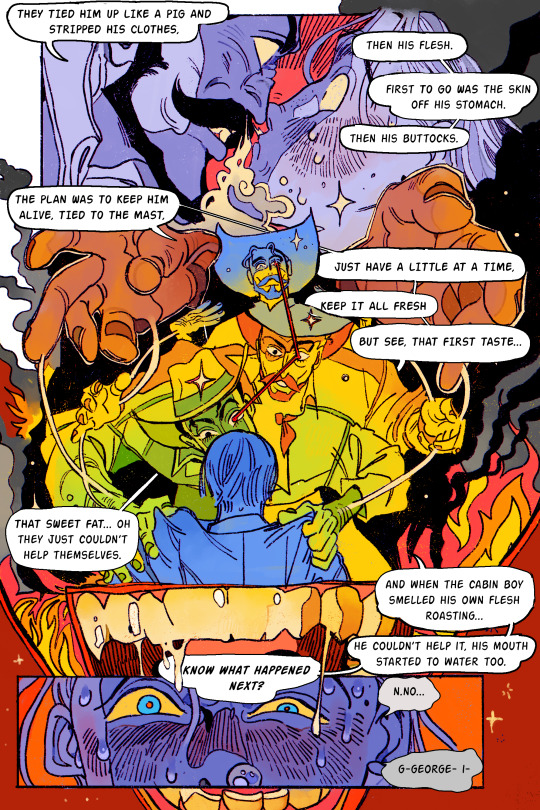
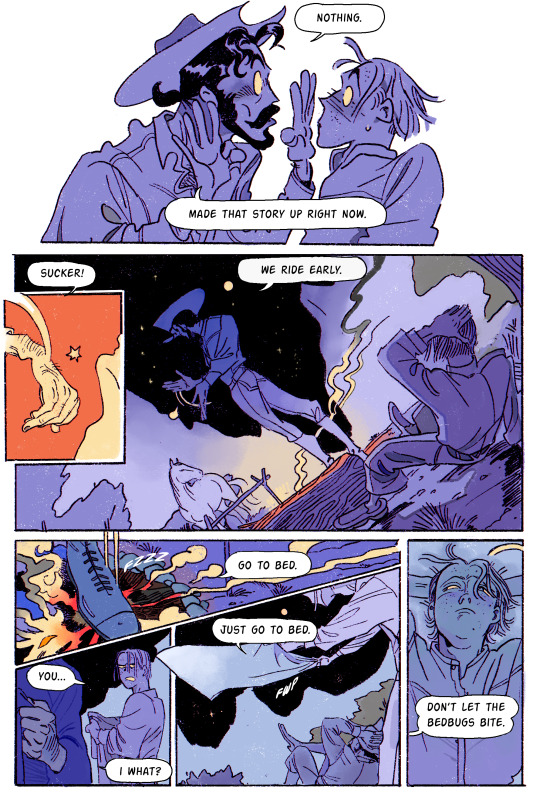
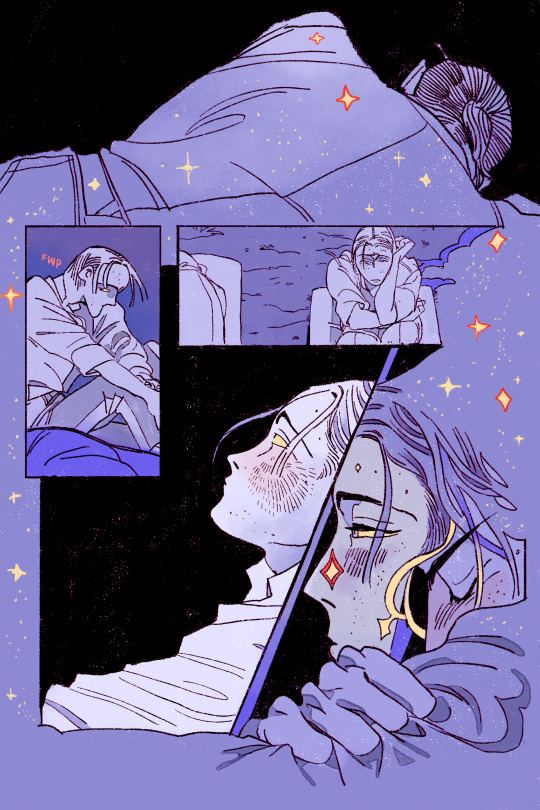

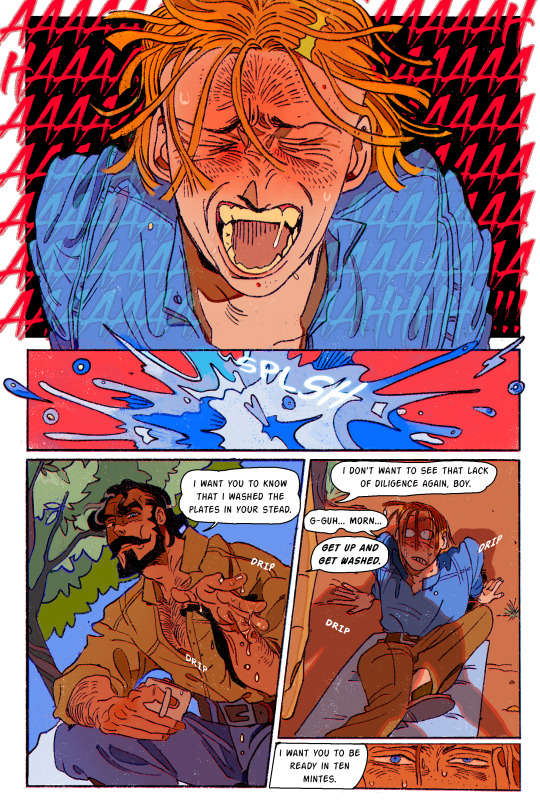


the 10 page pitch preview i made for my original comic, Hunky-Dory:) if you want to follow the process and read more, i'm uploading it as i go to patreon.com/jadenvargen !
8K notes
·
View notes
Text

DISCLAIMER: the blood is a feature, not a bug 🩸☎️
#you could probably compress some corporate horror social commentary in here#'we create tech with the heart to love you back 🫀'#this isn't rly one of those things tho i just wanted to make a gross lil sticker sheet comparing veins and wires#jara draws stuff#original#cw: body horror#cw: blood#cw: gore
12K notes
·
View notes
Text


if I try working on this anymore I’ll explode probably just take it
#five nights at freddy's#fnaf#william afton#vanessa shelly#fnaf movie#I didn’t like the fnaf movie aftons at first#I see the potential now#stop victim blaming vanessa and then saying u love Michael#losers#five nights at freddy’s fanart#fnaf fanart#cw blood#cw stabbing#cw gore
14K notes
·
View notes